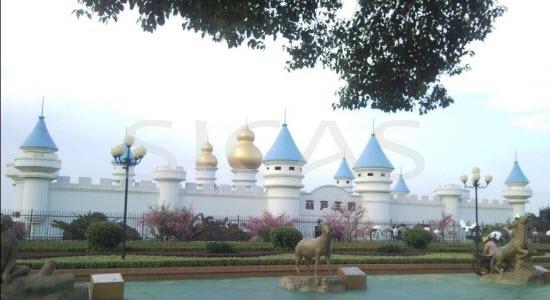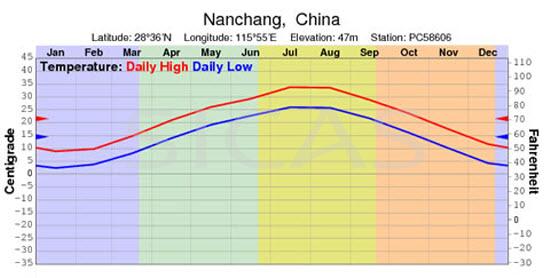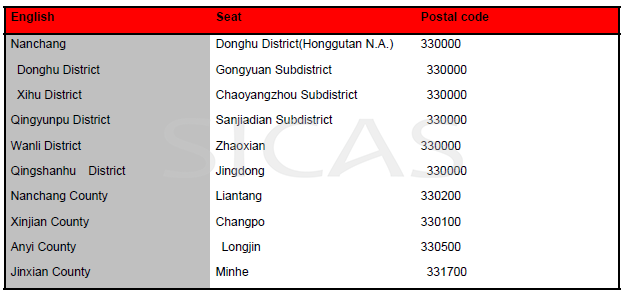 Study in Nanchang |
Nanchang is the capital of Jiangxi Province in southeastern China, located in the north-central portion of the province. As it is bounded on the west by the Jiuling Mountains, and on the east by Poyang Lake, it is famous for its scenery, rich history and cultural sites. Because of its central location relative to the Yangtze and Pearl River Delta regions, it is a major railroad hub in Southern China.
Nanchang has a monsoon-influenced humid subtropical climate with four distinct seasons. Winters are short and cool with occasional frosts; it begins somewhat sunny and dry but becomes progressively wetter and more overcast. Spring begins especially gloomy, and from April to June, each month has more than 220 mm (8.7 in) of rainfall. Summer is long and humid, with amongst the highest temperatures of any Chinese provincial capital, and with the sun shining close to 60% of the time in July and August, is the sunniest time of year. Autumn is warm to mild with the lowest rainfall levels of the year. The monthly 24-hour average temperature ranges from 5.3 °C (41.5 °F) in January to 29.2 °C (84.6 °F) in July, while the annual mean is 17.63 °C (63.7 °F). Annual precipitation stands at around 1,620 mm (64 in), while there are 1,820 hours of bright sunshine annually.
Jinxian County. Here SICAS lists these Districts, addresses and their post code for you.
|









